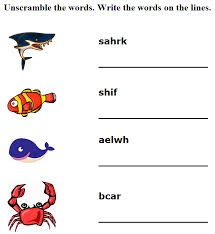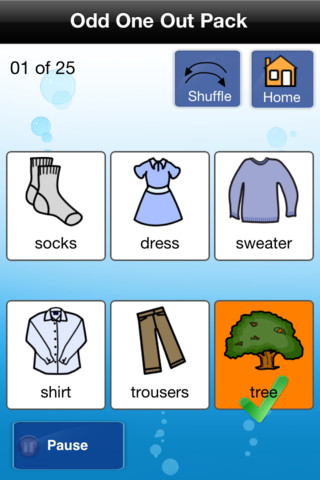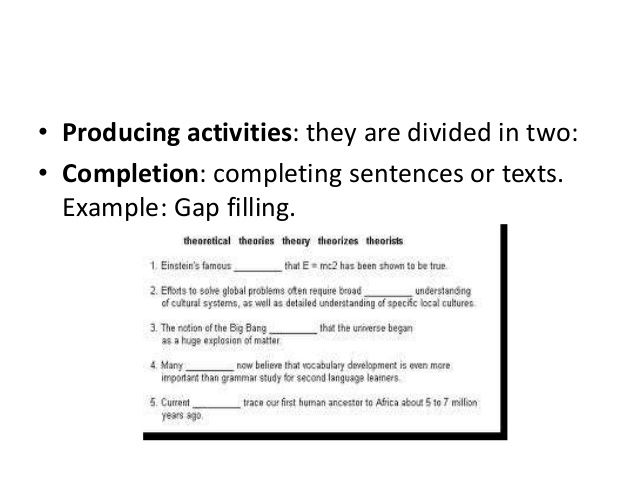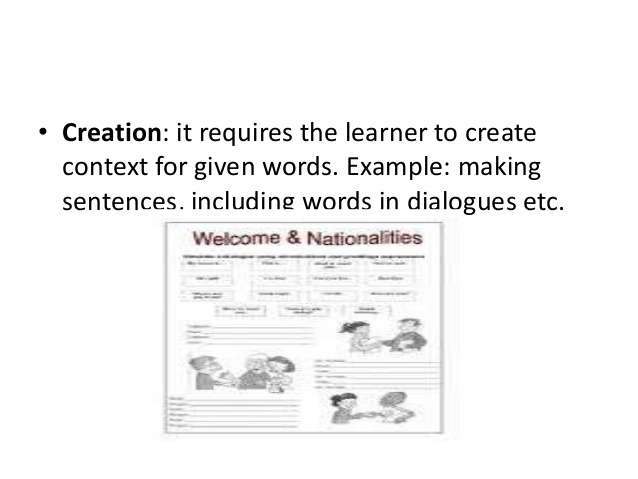
- •1.The content of foreign language teaching Components assigned to the teaching of foreign languages in primary schools
- •2. The aims of foreign language teaching;
- •3. Resources for Foreign Language teaching
- •4. The principals of Foreign Language Teaching
- •5. Methods and techniques in Foreign Language Teaching
- •6. The content of teaching phonetics. Teaching phonetics
- •Techniques for teaching phonetics
- •7. Requirements for selection of phonetic material:
- •Types of drill:
- •Types of reproduction exercises:
- •11. Board game
- •10. Methods of teaching vocabulary: translation, synonyms, antonyms.
- •Syns and Ants
- •11. Methods of teaching vocabulary: the use of visibility, word formation.
- •Teaching with flashcards
- •Flash cards are images on cards, used to help to remember new vocabulary in a new language.
- •The benefits of flashcards:
- •Types of
- •12. Methods of teaching vocabulary: a description of a word in English language, context.
- •13. Types of exercises in teaching vocabulary.
- •The learners have to match words/pictures with definitions.
- •The importance of grammar in teaching a foreign language
- •Student's difficulties in learning English grammar
- •1. Word order.
- •Methods of teaching grammar
- •Principles of teaching English grammar
- •Types of exercise for learning English grammar
- •The content of teaching listening. The most common difficulties in listening comprehension
- •Reasons for listening:
- •To get the gist.
- •Purposes for teaching listening:
- •The processes of listening comprehension: bottom-up and top-down
- •Types of listening:
- •Principles of teaching listening:
- •Difficulties in listening comprehension
- •Resources for teaching listening
- •Live speech (teacher’s speech (another teacher or guest’s speech), face–to-face interaction of learners in interviews, dialogues, etc.) Teacher should:
- •3. Video materials:
- •Methods of teaching listening
- •Types of exercises in teaching listening
- •Interviews
- •To train learners’ oral speech:
- •2. To stimulate learners to master English language and culture
- •3. To stimulate learners to think in English.
- •Learners’ difficulties with speaking:
- •Methods of teaching speaking
- •Types of exercises in teaching speaking
- •Problems with speaking activities
- •The content of teaching reading
- •Reasons for reading:
- •Kinds of reading:
- •Types of texts for reading:
- •Reading skills:
- •Reading principals:
- •Difficulties in reading:
- •Ways of reading:
- •Methods of teaching reading
- •There are three stages of the Communicative method in teaching reading:
- •Types of exercises in teaching reading The aims of reading exercises:
- •Types of exercises in teaching reading
- •Some examples of tasks:
- •The content of teaching writing
- •Reasons for writing:
- •The purposes for teaching writing:
- •Learners need to develop writing skills:
- •Writing involves subskills: accuracy and fluency.
- •Problems:
- •Connected penmanship of small letters.
- •Principles of teaching writing:
- •Methods of teaching writing
- •Teaching penmanship and spelling has some stages:
- •Writing compositions have three stages:
- •3. Post writing stage:
- •Types of exercises in teaching writing
- •Skill building exercises: The aims:
- •1. Copying.
- •2. Exercises on penmanship, spelling and punctuation.
- •Guided and Free writing exercises: The aims:
- •A descriptive paragraph about a text, or a number of texts on a certain subject.
- •An annotation on the text read.
- •In testing learners’ skills in writing the teacher should:
- •Tasks of thematic-calendar planning:
- •Lesson planning
- •The reasons of lesson planning: For teachers
- •For learners
- •Problems
- •The content of lesson planning The content of lesson planning includes the solution of the following tasks:
- •Requirements for lesson planning
- •1. Stages of the lesson
- •1. Preparation
- •2. Presentation/Modeling
- •3. Practice
- •4. Evaluation
- •5. Expansion
- •2.Ways to organize English lessons
- •3. How To Prepare a "Successful" Lesson!
- •5. The Plan of analysis of a lesson
- •6. The plan of self-analysis of a lesson.
- •7. The content (содержание) of teaching of primary school pupils
- •8. The content of teaching of preschoolers
- •1 . Sequence.(последовательность) The teacher doesn’t have to hurry to train the child in of spelling and grammar.
- •2 . Naturalness (естественность). The child doesn’t have to feel any excess loading (лишний груз).
- •3 . Persistence (настойчивость). The teacher has to interrupt studies for a while, and then to continue training, but already with other material.
- •1. The content of Foreign Language Teaching.
12. Methods of teaching vocabulary: a description of a word in English language, context.


Self-defining Context
The context makes the situation clear, and this in turn illuminates the meaning of the new word. This practice saves time and develops an intensive reading habit and better understanding.
Like - verb
Like – as
13. Types of exercises in teaching vocabulary.


Word soup is an exercise when you take a bowl and put here the letters/syllables and PP should make the words. Also you can give a list of “hidden” words on a blackboard.
Word search is an exercise which is directed to elicit the knowledge of studied vocabulary, its writing, memory, critical thinking. It’s a motivating, interesting and colourful.



![]()
The learners have to match words/pictures with definitions.



 Also
by themes!!!
Also
by themes!!!


Fill – In- The – Blank Exercises – the learners have to fill the blanks with necessary words.



Also they can make own pictures on the theme “Toys” can draw their favourite toys etc.
Ответы 3 курс
The importance of grammar in teaching a foreign language
The main aim of a foreign language teaching is the development of speaking skills. No speaking is possible without the knowledge of grammar and its mechanism. That’s why grammar is very important in FLT:
To understand a foreign language
To express oneself correctly, automatically and spontaneously without thinking over grammar rules
To be able to read and write in L2
Student's difficulties in learning English grammar
1. Word order.
In English, word order is more important than in Russian.
Tom gave Helen a rose.
Helen gave Tom a rose.
The meanings of these sentences are different because there is a different word order.
In Russian inflexions are very important.
Том дал Лене розу
Лене дал Том розу
The meanings of these sentences are the same because inflexion “e” in the word Лене indicates the object of the action.
Learners often break the word order so they do a lot of mistakes in expressing their thoughts.
2. Tense system
The English tense system is difficult for learners because of the difference of tense systems in Russian and English.
I have seen him today.
I saw him yesterday.
For learners the action is completed in both sentences. They do not pay attention to the adverbs today and yesterday in the sentences.
3. The sequence of tenses
It is difficult for learners because there is no the sequence of tenses phenomenon in Russian.
She is busy.
She said she was busy.
In the second sentence we change “is” to “was” because of the sequence of tenses.
4. Modal verbs
The use of modal verbs in different types of sentences is very difficult for the learners. Learners often use them with auxiliary verbs.
May I go home? No, you mustn't.
May I take your pen? Yes, you may.
Must I do it? No, you needn't.
I didn’t must do that.
5. Article
Articles are absent in Russian. Learners often don’t use them because they think articles are not important. Teaching English grammar must begin with explanation and practice of articles.
This is a pen. The pen is red. This is my pen and that is his pen.
6. Prepositions
Prepositions in English and Russian don’t often match.
To get about - путешествовать (в русском языке предлог отсутствует), to get at – (достать, добраться до)
7. Auxiliary verbs
Auxiliary verbs are absent in Russian. The verbs do and have may be auxiliary and notional at a time.
What do you do at your free time?
What have you had for breakfast today?
8. Verb forms.
There are a lot of verb forms in English that confuse Russian learners
(have - has -had; do –does – did)
